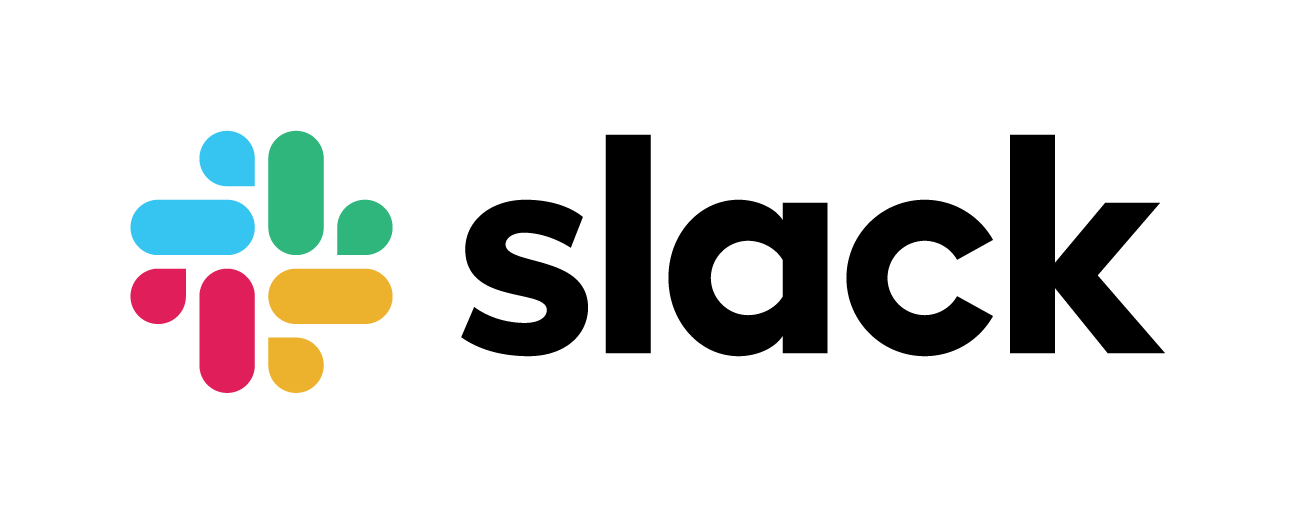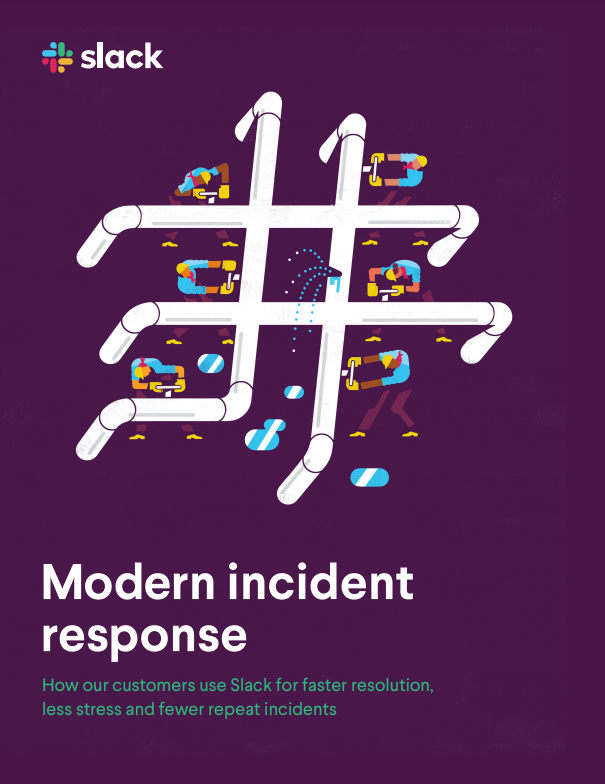Slack
Success
You have successfully submitted your enquiry. Someone from our company will respond ASAP
Slack is the collaboration hub that brings the right people, information and tools together to get work done.

White Papers
Slack: Total Economic Impact™ für Tech-Teams
Slack hat Forrester Consulting mit der Durchführung einer Studie zu Total Economic Impact™ sowie mit der Untersuchung der potenziellen Kapitalrendite, die Unternehmen durch den Einsatz von Slack Plus oder Slack Grid erzielen können, beauftragt. Diese Studie soll den Leserinnen und Lesern helfen, die potenziellen finanziellen Vorteile von Slack in ihrem Unternehmen zu evaluieren. Forrester hat erfahrene Slack-Kunden befragt, um Nutzen, Kosten und Risiken in Verbindung mit der Investition in Slack besser zu verstehen. Vor der Nutzung von Slack haben die einzelnen Abteilungen der befragten Unternehmen voneinander unabhängig E-Mails und Chat-Tools verwendet. Beispielsweise haben die Entwickler- und TechTeams andere Kommunikations- und Chat-Tools als die Vertriebs- und Support-Teams genutzt. Deshalb haben die Unternehmen nach Möglichkeiten gesucht, ihre Kommunikation zu verbessern, Produktivität und Effizienz zu steigern und ihre Unternehmenskultur insgesamt zu optimieren. Die befragten Unternehmen haben sich für Slack entschieden, weil das Tool Remote-Work unterstützt und eine starke Unternehmenskultur fördert (z. B. erleichtert es den Umstieg auf Remote-Work, es bietet die Wahl zwischen synchronem und asynchronem Arbeiten und es erhält und verbessert die Unternehmenskultur). Außerdem kann es problemlos erweitert sowie in andere geschäftliche und technische Anwendungen integriert werden.
Reinventing Work: Warum wir die Arbeit neu erfindenmüssen
Wir haben eines der schwierigsten Jahre in der Unternehmensgeschichte hinter uns. Die Pandemie hat alle Unternehmen dazu veranlasst, Transformationen zu beschleunigen, die gewöhnlich Jahre oder sogar Jahrzehnte dauern. Und was war die wichtigste Transformation? Der Übergang zum digitalen Büro. Vor der Pandemie galt der physische Standort eines Unternehmens für die Zusammenarbeit und Produktivität als unverzichtbar. Digitale Tools ergänzten die synchrone, persönliche Arbeit vor Ort. Allerdings wird dieser Ansatz heute weder den Unternehmensbedürfnissen noch den Erwartungen der Mitarbeiterinnen und Mitarbeiter gerecht. Die heutige RemoteArbeitswelt erfordert ein digitales Büro, d. h. einen zentralen Ort, der Projekt-Teams, Tools, Kunden und Partnerunternehmen über Zeitzonen und räumliche Grenzen hinweg miteinander vernetzt.
Repenser le travail dedemain: le guide des équipes de dev
En 2020, les équipes d’ingénierie logicielle étaient les plus aptes à s’adapter au télétravail. Contrairement aux autres services, qui ont eu du mal à adopter la collaboration à distance et le travail asynchrone, de nombreuses équipes de développement avaient déjà adopté des méthodes de travail flexibles – au sein des DevOps ou dans des équipes dispersées. Nous entrons dans un nouveau monde du travail, et c’est l’occasion pour ces équipes de développement de jouer un rôle de management. Les méthodes agiles utilisées en ingénierie peuvent servir d’exemples pour développer un nouveau mode de travail dans toute l’entreprise. Et les outils que ces équipes utilisent pour rester productives et coordonnées peuvent permettre aux salariés à tous les niveaux de gagner en efficacité.
Repenser le travail de demain: le guide du responsable informatique
L’année 2020 a connu de nombreux bouleversements, qui vont changer la manière dont nous travaillons à long terme. Pour chaque entreprise, ces bouleversements sont l’occasion d’envisager le travail sous un nouvel angle, et de trouver une formule qui combine le meilleur du présentiel et du distanciel. Les responsables informatiques jouent un rôle moteur dans le développement de nouvelles formules, en identifiant les outils et les systèmes qui permettront de booster les activités et en aidant l’entreprise à en tirer pleinement parti. Comme nous allons le voir dans ce guide, bon nombre d’entre eux considèrent que la collaboration par canaux dans Slack est une solution idéale pour ce nouveau mode de travail hybride et asynchrone.
Guide pratique du QG numérique
Les événements récents nous ont prouvé que nous pouvons être efficaces, créatifs et productifs en travaillant à distance, même pendant une crise sanitaire. Nous avons assoupli nos horaires de travail, adopté le télétravail, intégré des réunions Zoom, et nous avons appris à mieux connaître nos collègues sur le plan personnel. Nous savons que ces nouvelles modalités de travail fonctionnent et qu’à l’avenir, les collaborateurs voudront encore bénéficier de cette flexibilité. Une étude réalisée par le Future Forum révèle que 93 % des salariés souhaitent avoir des horaires flexibles ; ils sont également 76 % à désirer davantage de souplesse concernant leur lieu de travail. Les entreprises, de toutes les tailles et de tous les secteurs, profitent de cette opportunité pour réinventer leurs méthodes de travail. Certaines maintiendront la totalité de leurs activités en télétravail, d’autres opteront pour un retour au présentiel, et nombreuses seront celles qui adopteront un modèle hybride. Mais le point commun entre tous leurs dirigeants est le besoin d’un QG numérique, flexible et inclusif, pour travailler à distance. Basculer vers un QG numérique n’implique pas forcément d’abandonner les bureaux physiques. Il s’agit de permettre aux collaborateurs de travailler où et quand cela leur convient le mieux. Les bureaux ne sont qu’un outil parmi d’autres pour construire des relations et créer un espace de travail favorable à la concentration. Un QG numérique vous permet de rassembler vos équipes, outils, partenaires et clients autour de priorités et d’objectifs communs, sans limites géographiques ni contraintes de fuseaux horaires.
Modern incident response
The digital world is open 24/7. So it follows that digital consumers expect IT and customer service to keep the same hours. These exceedingly high expectations mean that no issue is too small or common to frustrate customers, from broken code to site-wide outages. The data analytics company Splunk reports that many companies experience incidents like these about five times a month, with each offense costing more than $100,000—and annual IT downtime costing enterprises $700 billion in lost productivity.
The Total Economic Impact™ Of Slack For Technical Teams
Slack commissioned Forrester Consulting to conduct a Total Economic Impact™ (TEI) study and examine the potential return on investment (ROI) companies may realize by deploying Slack Plus or Slack Grid. The purpose of this study is to provide readers with a framework to evaluate the potential financial impact of Slack on their organizations. To better understand the benefits, costs, and risks associated with this investment, Forrester interviewed and surveyed customers with experience using Slack. Prior to using Slack, the interviewed and surveyed organizations used email and chat tools siloed across business functions. For example, the developer and engineering teams used different communication and chat tools compared to the sales and support teams. Therefore, companies were looking for ways to improve communication, improve productivity and efficiency, and improve organizational culture. The interviewed and surveyed organizations decided to deploy Slack due to its ability to enable a remote workforce and strong culture (e.g., by making the transition to remote work easier, allowing for synchronous and asynchronous work, and maintaining and improving company culture) and its extensibility and ease of integrating other business and engineering applications. This resulted in significant benefits, as detailed in this case study. With Slack, organizations improved productivity, saved costs by sunsetting legacy tools, accelerated revenue, and improved recruiting and retention of employees.
Reinventing work
We’re coming off one of the most challenging years in business history. The pandemic forced every company to accelerate transformations that typically take years or even decades. Chief among them? The transition to a digital HQ. Prior to the pandemic, an organisation’s physical headquarters served as the nucleus of collaboration and productivity. Digital tools supplemented in-person, synchronous work. But that approach no longer squares with business needs and employee expectations. Today’s work-from-anywhere world requires a digital HQ—a place that connects teams, tools, customers and partners across time zones and physical spaces. Over the past year, we’ve spoken with forward-thinking business leaders from all industries, company sizes and disciplines about their transition to a digital HQ. And we’ve organised their input into five imperatives: • Employee engagement needs a digital-first makeover • Alignment matters now more than ever • The ecosystem economy demands a new partner playbook • Customer-led disruption forces the CX convergence • The winners are accelerating work through automation These aren’t about simple answers that apply to every company. Rather, they’re about emerging themes and innovative methods for proactively meeting the new challenges of work.









